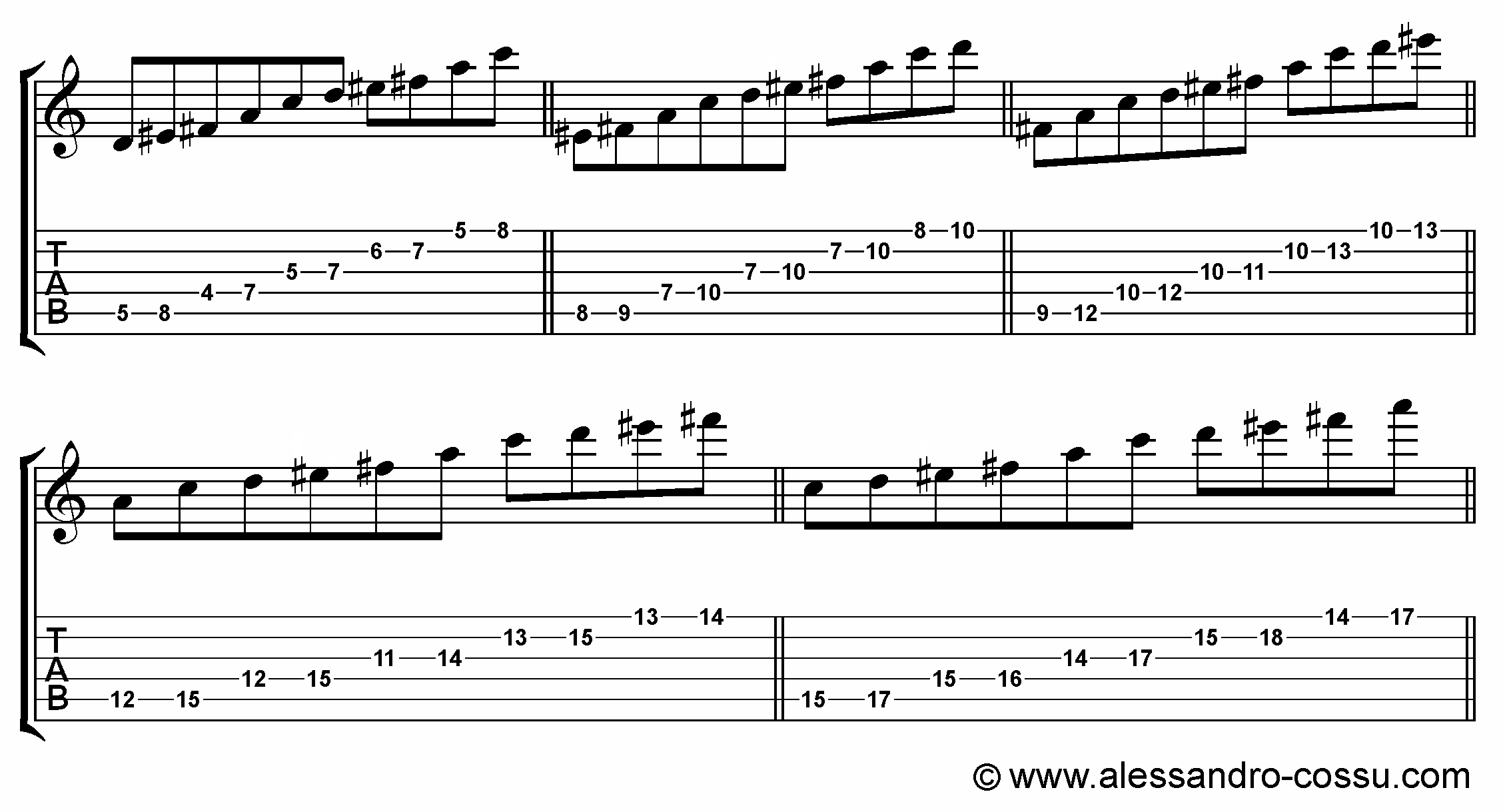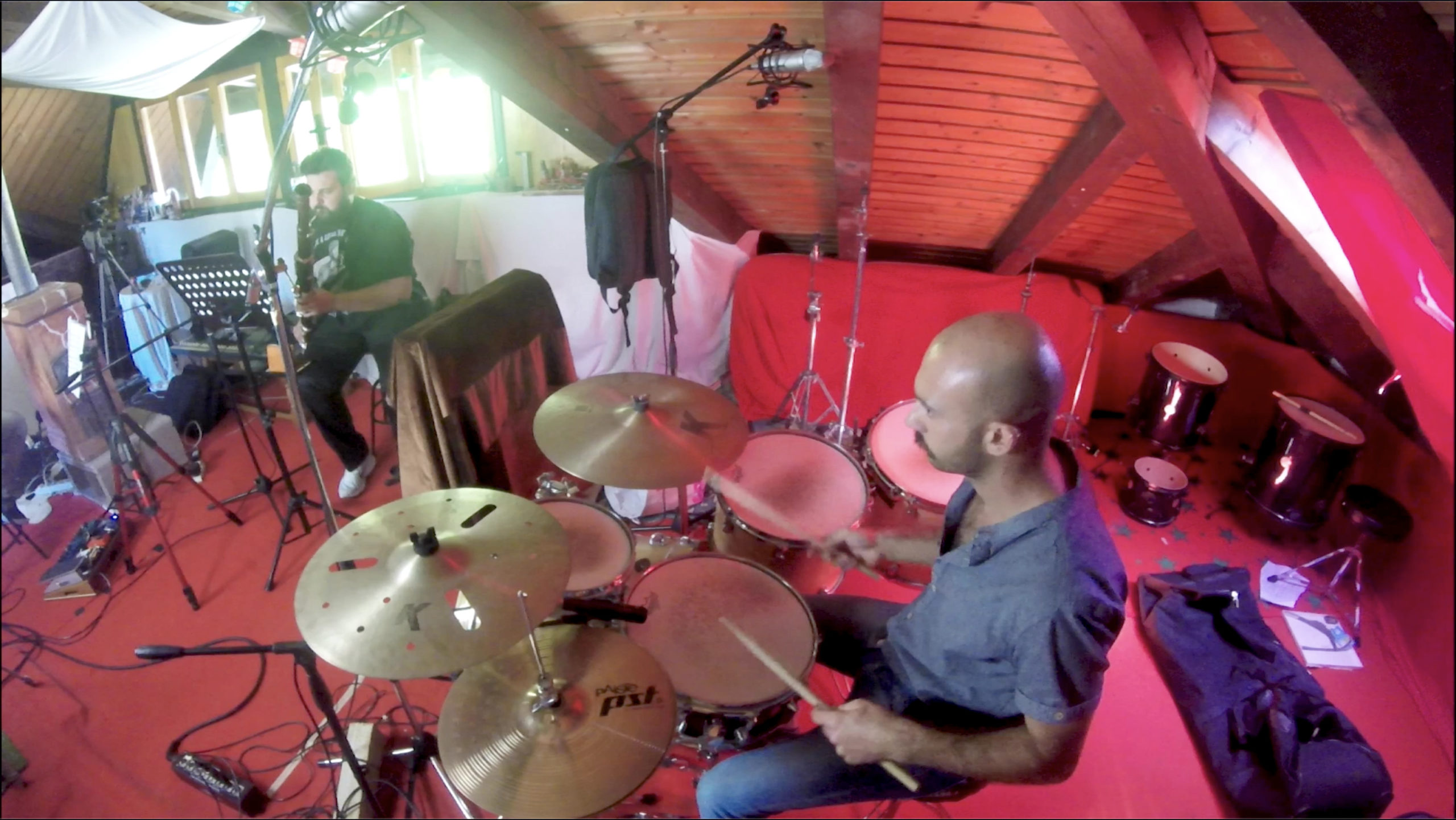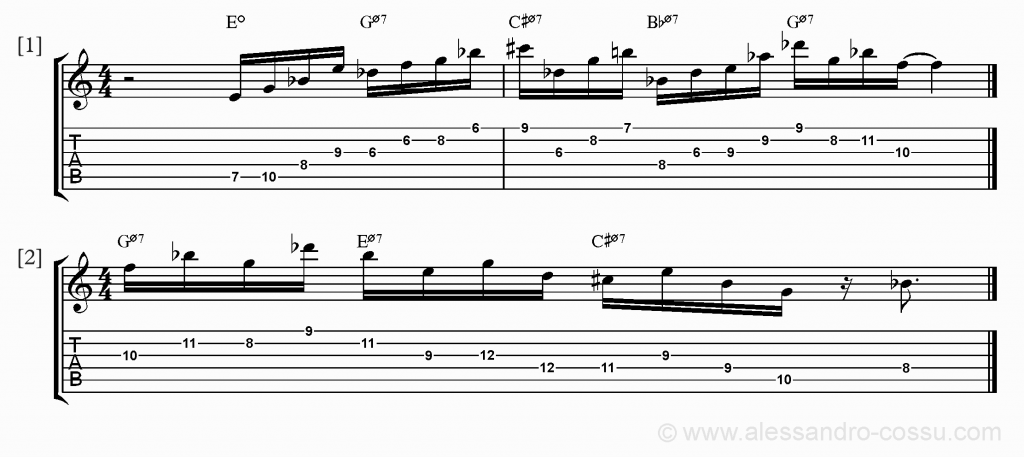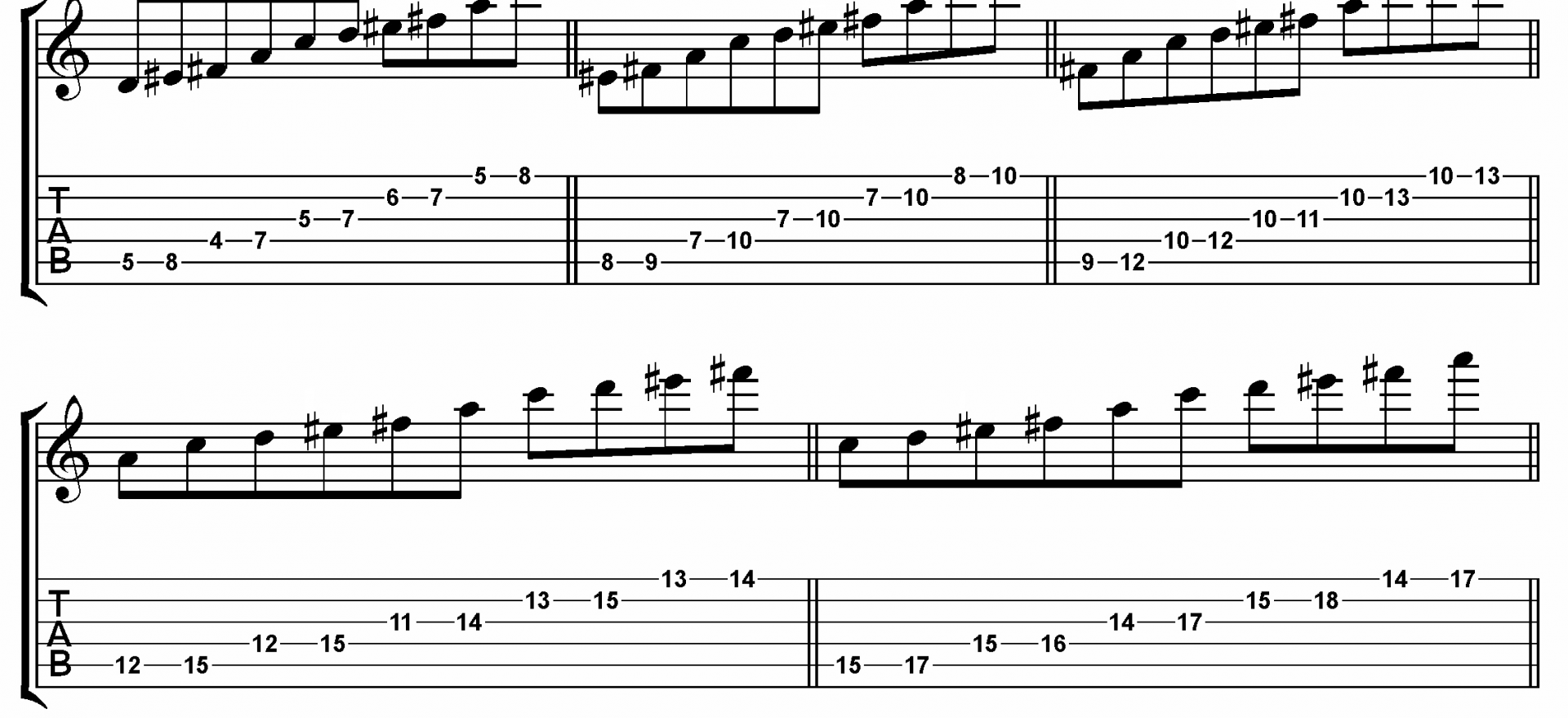
7b9 & 7#9 ARPEGGIOS
19 September 2020
New Instrumental Project
24 September 2020The Diminished Scale
If you are trying to move further the pentatonic and diatonic scales and experimenting with “other sounds”, the diminished scale will give you some interesting material to work with.
Building the Scale
The diminished scale, also called octatonic, is a symmetrical scale.
The name diminished tells us that it is built on the diminished (seventh) chord, while the name octatonic comes from the fact that it is made of eight notes.
It is symmetrical because at certain intervals its structure is repeated verbatim.
To be more precise, the scale is build as such:
st – T – st – T – st – T – st – T
As you can see, there is a constant repetition of a semitone and tone formula.
This “symmetry” makes the scale very unstable because there is no “push” towards a tonic, like it happens in the major and minor scale. Lacking a tonic, the scale never finds a rest.
Other examples of symmetrical scales are the whole-tone, the augmented and even the chromatic scales.
Harmonization & Use
Just like its intervals, chords in the diminished scale are also repeating.
Say we want to build a diminished scale from E. This will be:
E – F – G – G# – Bb – B – C# – D – E
This eight notes gives us an incredible variety of harmonic possibilities.
Triads
- 8 diminished (on every scale degree);
- 4 minor (Em, Gm, Bbm, C#m);
- 4 Major (E, G, Bb, C#).
Seventh chords
- 4 diminished seventh;
- 8 half-diminished;
- 4 Dominant seventh;
- 4 Dominant seventh with b9;
- 4 Dominant seventh with #9;
- 4 Dominant seventh with b5.
Two Phrases
The two phrases I wrote while messing around with the diminished scale are both implying a progression of half-diminished arpeggios (the only exception being the opening of the first one where I used a fully diminished E°7 arpeggio).





